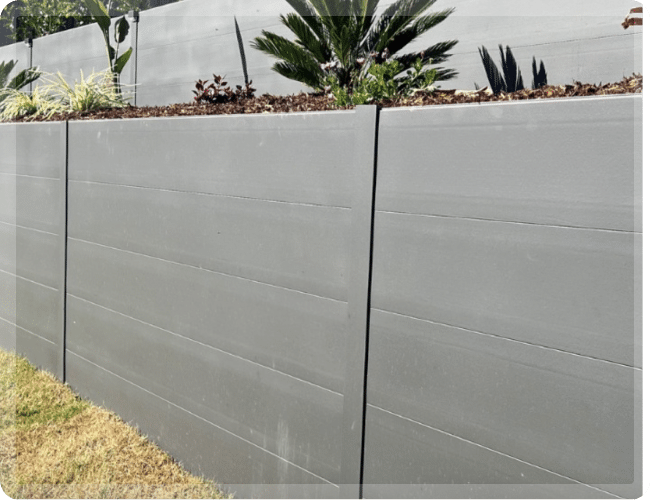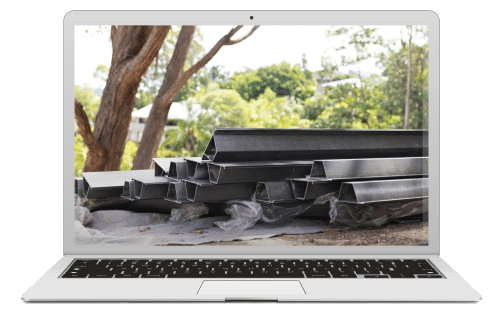Retaining walls are a practical and often essential feature for many properties in Australia, providing soil support and enhancing the landscape. Before you begin your project, there are several factors to consider to ensure your retaining wall is built safely, legally, and effectively. This guide will walk you through everything you need to know about constructing a retaining wall, from understanding its purpose to navigating regulations and permits.
What is a Retaining Wall?
A retaining wall is a structure designed to hold back soil and prevent erosion on sloped land. These walls are often used to create level areas for gardens, driveways, or building foundations and can be made from various materials, including brick, concrete, timber, or modular blocks. Retaining walls not only provide functional benefits but can also add aesthetic value to your property.
Why Would You Put Up a Retaining Wall?
There are several reasons why homeowners choose to install retaining walls:
- Erosion Control: Retaining walls help stabilise soil and prevent erosion on sloped properties.
- Leveling Sloped Land: Create flat, usable spaces for gardens, patios, or driveways.
- Improved Drainage: Retaining walls can help manage water flow and prevent flooding.
- Aesthetic Appeal: They can enhance the landscaping and add to the overall look of your property.
- Property Value: A well-built retaining wall can increase your home’s market appeal and value.
What Are the Rules Governing Retaining Walls in Australia?
Building a retaining wall isn’t just about choosing a design; you need to be aware of regulations that vary across states and councils:
- Height Restrictions: Many councils require approval for retaining walls above a certain height (usually around 1 meter). If your wall exceeds this, you may need engineering plans and council approval.
- Building Codes: Complying with building codes is essential, especially if your wall is near a public area or a neighboring property.
- Zoning Laws: Local zoning may dictate where you can build a retaining wall, especially on shared boundaries.
- Environmental Impact: In areas prone to landslides or flooding, stricter regulations may apply.
It’s important to check with your local council for specific requirements before beginning construction.
Do I Need Approval to Build a Retaining Wall?
Approval may be required depending on the wall’s height, location, and potential impact on neighboring properties:
- Council Approval: Most councils in Australia require permits for walls over a certain height or those affecting drainage.
- Neighbor Consent: If the wall is on or near a shared boundary, you may need written consent from your neighbor.
- Professional Sign-Off: In some cases, especially for higher or complex walls, a structural engineer’s certification may be needed.
What is the Difference Between a Retaining Wall and a Retainer Wall?
While the terms are often used interchangeably, a retaining wall refers to a structure built to hold back soil, while a retainer wall is a more general term that can refer to any wall that serves a similar function, including decorative features.
What Are Multi-Residential Retaining Walls?
Multi-residential retaining walls are typically found in developments with multiple housing units, such as townhouses or apartment complexes. These walls often need to meet specific requirements for fire safety, noise reduction, and structural integrity, especially if they are close to neighboring properties or public areas.
What is Considered an Illegal Retaining Wall?
An illegal retaining wall is one that does not comply with local regulations or was built without the required approvals. Common reasons for a wall being classified as illegal include:
- Exceeding Height Limits: A wall built above the maximum permitted height without approval.
- Impacting Neighboring Properties: If the wall causes drainage or stability issues for neighboring properties.
- Non-Compliant Materials: Using materials that do not meet safety or aesthetic requirements set by local councils.
Permits and Regulations: What You Need to Know
Navigating the approval process is a vital step in constructing a retaining wall. Here’s what to keep in mind:
- Height Limitations: Walls over a certain height (usually 1 meter) often require a building permit.
- Setbacks and Boundaries: Your local zoning laws may dictate how close to the property line you can build.
- Drainage Requirements: Proper drainage is essential to prevent water pressure buildup behind the wall, which could lead to failure.
Cost Estimation: What Factors Affect the Price?
Several factors will influence the overall cost of your retaining wall project:
- Materials: Costs can vary significantly based on the materials chosen.
- Labor: Professional installation will add to the cost, but it ensures compliance with regulations.
- Hidden Expenses: Don’t overlook permits, inspections, or potential landscaping changes.
Design Considerations: Height, Style, and Aesthetics
The design of your retaining wall should complement your property while serving its functional purpose:
- Height: Consider how high the wall needs to be based on the slope of your land.
- Style: Choose a design that matches the architectural style of your home.
- Finishing Touches: Decorative elements like coping stones or lighting can enhance the appearance.
Foundation and Structural Integrity
The foundation is the most crucial aspect of your retaining wall. If not built correctly, the wall may fail. Factors such as soil type, wall height, and materials will determine the necessary foundation depth and reinforcements. For complex or high walls, it is advisable to consult a structural engineer.
Security and Privacy
While retaining walls primarily serve to hold back soil, they can also contribute to security and privacy. For added protection, consider incorporating fence extensions or planting hedges along the top of the wall.
Environmental Impact
If sustainability is a priority, consider eco-friendly materials or designs. Options include using recycled materials or integrating plantable retaining wall blocks to support green spaces.
Hiring a Contractor: What to Look For
Choosing the right contractor ensures your retaining wall is built to last:
- Experience: Look for contractors who specialise in retaining walls and have a portfolio of completed projects.
- Reputation: Read reviews or ask for references to ensure the contractor has a good reputation.
- Compliance: Make sure the contractor is familiar with local building regulations.
Contact The SuperSleepers team
Ready to build your retaining wall? SuperSleeper can guide you through the process, from material selection to installation. Consult with our experts for a tailored quote and advice on the best solutions for your property. Visit our website for more home improvement resources and landscaping tips.


